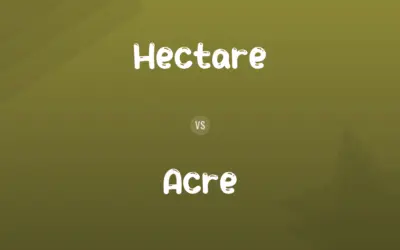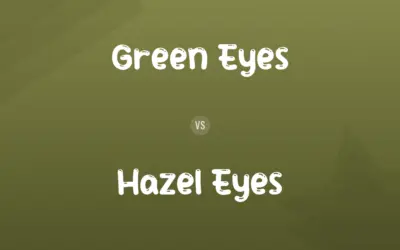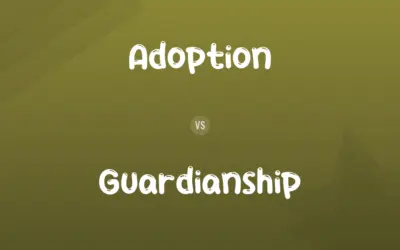Gharial vs. Caiman: Difference and Comparison
Edited by Muazma Batool — By Muneeza Rehman — Updated on December 29, 2023
The gharial is a large, slender crocodilian with a long, narrow snout, native to Indian river systems, while the caiman is a smaller, broader-snouted crocodilian found in Central and South American waterways.

Difference Between Gharial and Caiman
Gharials are known for their distinctive long and thin snouts, adapted for catching fish, whereas caimans have shorter, broader snouts, suited for a more varied diet.
Muneeza Rehman
Dec 29, 2023
The habitat of the gharial is limited to freshwater rivers in India and Nepal, focusing on riverine environments. Caimans, in contrast, inhabit a range of freshwater environments across Central and South America, including rivers, lakes, and wetlands.
Muazma Batool
Dec 29, 2023
Gharials are one of the largest crocodilian species, reaching up to 15-20 feet in length, with a more slender build. Caimans are generally smaller, with most species averaging 6-8 feet in length and possessing a stockier build.
Muneeza Rehman
Dec 29, 2023
Conservation status differs significantly; gharials are critically endangered, with their population threatened by habitat loss and fishing. Caimans, on the other hand, have a more stable population, although some species are at risk.
Lucas
Dec 29, 2023
The reproductive behavior of gharials involves nesting on sandbanks, where they lay large clutches of eggs. Caimans, conversely, often build nest mounds and may have smaller clutches, reflecting their different environmental adaptations.
Muneeza Rehman
Dec 29, 2023
Gharial vs. Caiman Comparison Chart
Snout Shape
Long and narrow, specialized for catching fish
Shorter and broader, versatile diet
Muneeza Rehman
Dec 29, 2023
Habitat
Freshwater rivers in India and Nepal
Freshwater environments in Central/South America
Muazma Batool
Dec 29, 2023
Conservation Status
Critically endangered
Mostly stable, some species at risk
Muneeza Rehman
Dec 29, 2023
Reproductive Behavior
Nesting on sandbanks, large clutches of eggs
Building nest mounds, smaller clutches
Kaitlyn
Dec 29, 2023
Gharial vs. Caiman Definitions
◉Gharial
The gharial is a large crocodilian with a distinctive long snout.
A gharial was spotted basking on the riverbank, its slender snout unmistakable.
Muazma Batool
Dec 29, 2023
◉Caiman
A caiman is a small to medium-sized crocodilian found in the Americas.
A caiman lurked in the shallow waters, its eyes just above the surface.
Muazma Batool
Dec 29, 2023
◉Gharial
The gharial is characterized by its narrow jaws and sharp teeth.
The gharial's narrow jaws allow it to snap up fish with precision.
Muneeza Rehman
Dec 29, 2023
◉Caiman
Caimans often have a broader diet compared to other crocodilians.
The caiman's diet includes fish, birds, and small mammals.
Kaitlyn
Dec 29, 2023
◉Gharial
Gharials are specialized fish-eaters, native to Indian rivers.
Gharials are adept at catching fish, a primary component of their diet.
Jonathan
Dec 29, 2023
◉Caiman
Caimans are adaptable to various freshwater habitats.
The caiman thrives in diverse environments, from rivers to marshes.
Muneeza Rehman
Dec 29, 2023
◉Gharial
Gharials are among the largest crocodilian species.
The massive gharial, stretching nearly 20 feet, glided through the water.
Henry
Dec 29, 2023
◉Caiman
Caimans are known for their bony scales and shorter snouts.
The caiman's armored back and broad snout are distinctive features.
Leo
Dec 29, 2023
◉Gharial
Gharials are critically endangered, mainly due to habitat loss.
Conservation efforts are crucial to protect the dwindling gharial population.
Levi
Dec 29, 2023
◉Caiman
Some caiman species are at risk, but most have stable populations.
While some caiman species face threats, others are common in their habitats.
Muneeza Rehman
Dec 29, 2023
◉Gharial
A crocodilian reptile (Gavialis gangeticus) of South Asian rivers, having a long slender snout that in mature males has a bulbous growth at the tip. Also called gavial.
Muneeza Rehman
May 03, 2023
◉Caiman
Any of various tropical American crocodilians of the genus Caiman and related genera of the family Alligatoridae, differing from the alligators in having bony plates on the belly.
Muneeza Rehman
May 03, 2023
◉Caiman
(narrowly) Any of the relatively small crocodilians of the genus Caiman, within the family Alligatoridae.
Muneeza Rehman
May 03, 2023
◉Caiman
(loosely) A crocodilian of the subfamily Caimaninae, which includes the very large black caiman.
Muneeza Rehman
May 03, 2023
◉Caiman
A semi-aquatic lizard, of the genus Dracaena, found in South America. To differentiate from caimans, they are referred to as caiman lizards.
Muneeza Rehman
May 03, 2023
◉Caiman
an alligator-like reptile of Central America and South America having a more heavily armored belly
Muneeza Rehman
May 03, 2023
Gharial vs. Caiman Frequently Asked Questions
What distinguishes a gharial's snout?
It's long and narrow, specialized for catching fish.
Muneeza Rehman
Dec 29, 2023
Where are gharials primarily found?
In the freshwater rivers of India and Nepal.
Muneeza Rehman
Dec 29, 2023
What is typical of a caiman's snout?
Shorter and broader, suitable for a diverse diet.
Muazma Batool
Dec 29, 2023
What are common habitats for caimans?
They live in various freshwater environments in the Americas.
Olivia
Dec 29, 2023
What is unique about caiman reproduction?
They build nest mounds and usually have smaller clutches of eggs.
Henry
Dec 29, 2023
Content Creators
Written by
Muneeza RehmanAt Comparisons.wiki, Muneeza skillfully navigates the vast sea of information, ensuring clarity and accuracy as the lead content editor. With a keen eye for detail, she curates every comparison to enlighten and engage readers.
Edited by
Muazma BatoolAs a content editor, Muazma Batool is not just a grammar guru but a creative mastermind who breathes life into every word. With an eagle eye for detail and a passion for storytelling, she transforms bland text into engaging content that captivates audiences and drives results.


































